Black-headed Gull
(Larus ridibundus).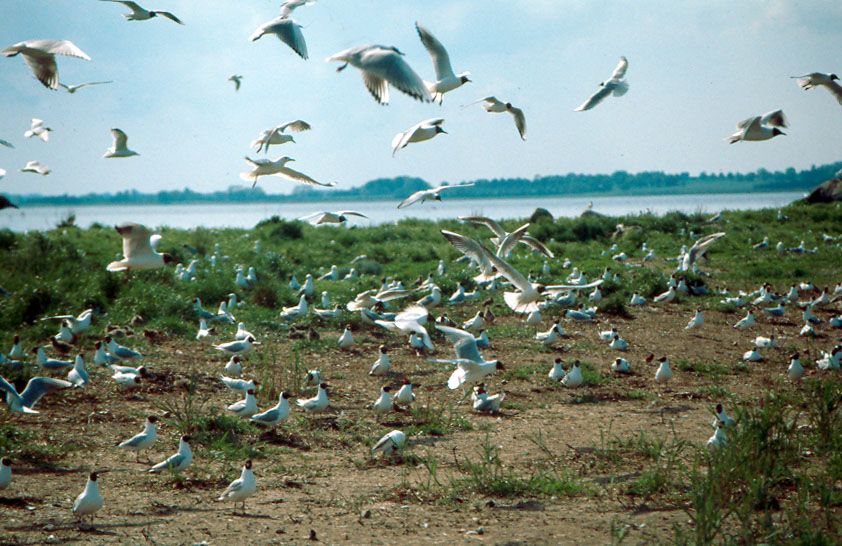
A Black-headed Gull colony.
The Black-headed Gull was once the most numerous breeding-bird on the fjord. The population ranged between 5,000 and 15,000 pairs until the mid 1990s, but has since suffered a serious decline. In 2009 the population was down to less than 100 pairs.
They often breed in big, densely crowded colonies. The biggest colonies are – or have been – Ringøen, Kølholm, Hyldeholm in Lejre inlet, Skovholmene, Øksneholm and Svaleø. There are also large colonies of Black-headed Gull on Isefjord, and there is often a large colony at Selsø.
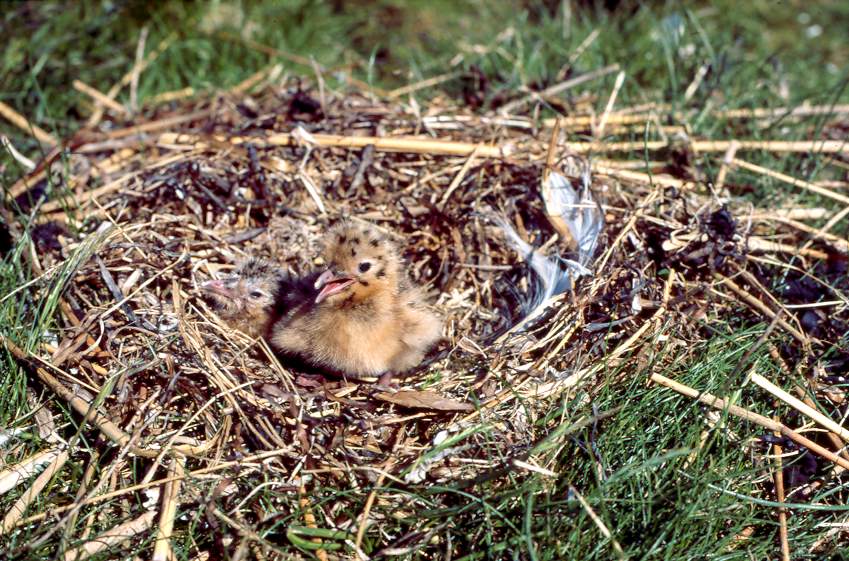
Newly-hatched Black-headed Gull chicks.
The Black-headed Gull begins nest building in late April or early May. The nests are often about a metre apart and typically contain 3 eggs. The young hatch at the end of May and are able to fly about a month later.
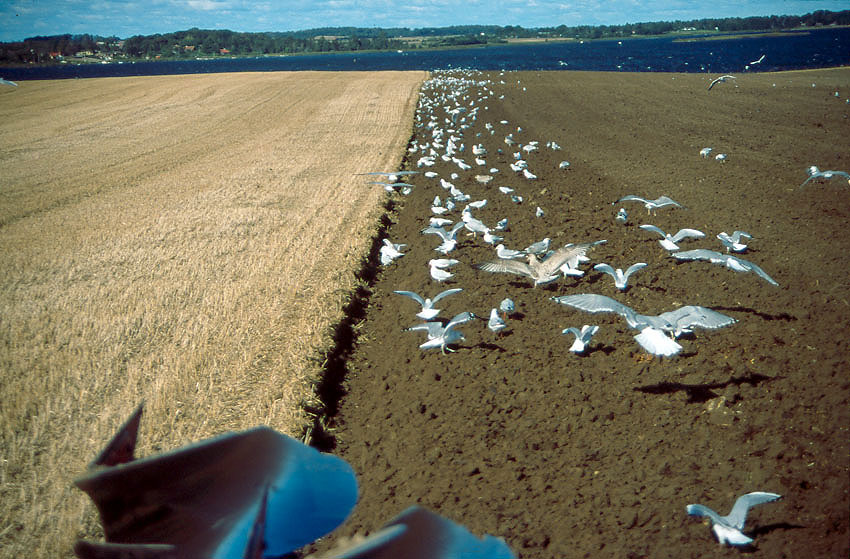
Gulls following a plough to find food.
The Black-headed Gull, which finds most of its food in the fields, has been decreasing in numbers in the whole Baltic area, as more land is used for winter crops, which reduces the amount of food available in the spring.
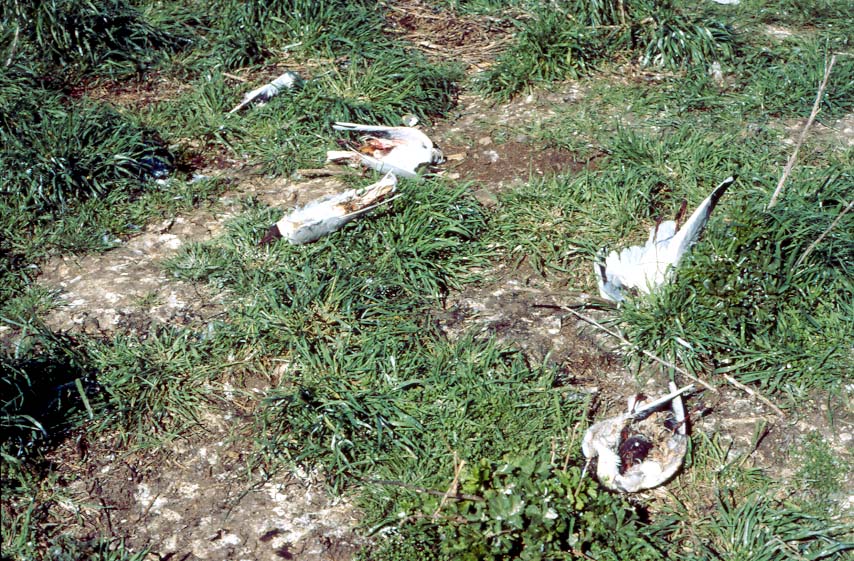
Gulls killed by rats.
The sharp decline in the size of the population in Roskilde Fjord is due primarily to rats. In 1986 a rat plague began on many of the islets where the Black-headed Gull bred. In the worst year 500-1000 adult birds were found bitten to death, and it is estimated that up to 10,000 young and eggs were destroyed by rats. The rats also attacked Common Gull (Larus canus), Arctic Tern (Sterna Paradisaea) and Common Tern (Sterna hirundo) amongst others. There were so many dead Black-headed Gulls on Ringø that the swans used them for nesting material.
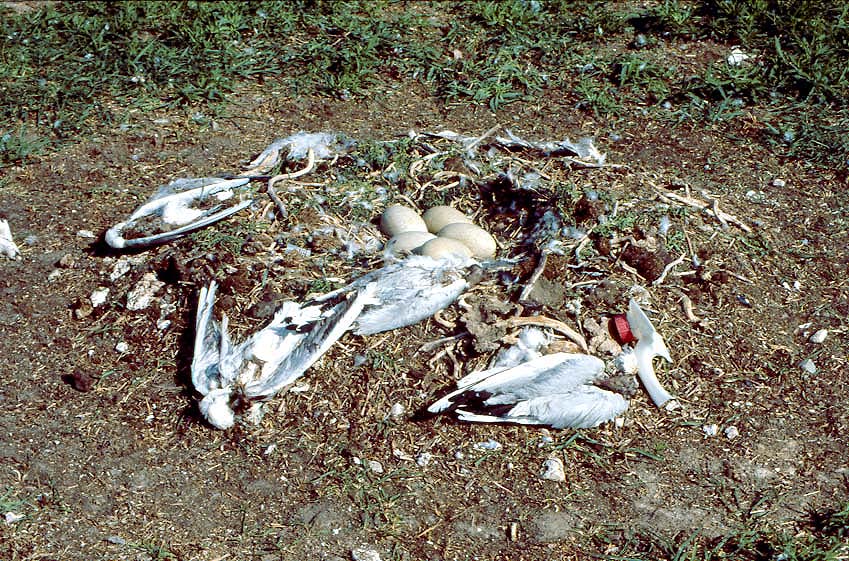
Swan’s nest made from gulls killed by rats.
When Black-headed Gulls have had a catastrophic breeding season because of rats, for example, they abandon the place where it happened and do not return for some years. The same applies to most other species regardless of the cause of the disaster. In these cases they move to another site and the large number of islands in Roskilde Fjord is therefore very helpful.
Rats are now held in check all around Roskilde Fjord and Isefjord, but a new problem appeared in 2001. In the large colony on Ringø, where there were about 4,000 pairs of Black-headed Gull, not a single young bird left the nest. Most never hatched out and the rest died shortly after hatching. The same thing happened in 2002. Despite veterinary examinations it has not been possible to find the reason for this breeding failure. On nearby Svaleø the Black-headed Gulls had a successful season both years.
Although there are a number of possible reasons for the recent decline in the Black-headed Gull population there is no certain explanation.
Key to the Distribution Map.
Black-headed Gull - population trends
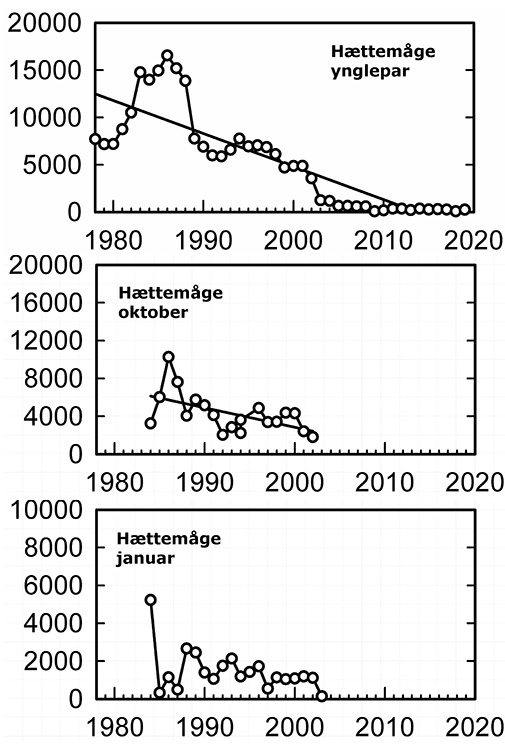
Black-headed Gull Breeding pairs
Black-headed Gull October
Black-headed gull January
